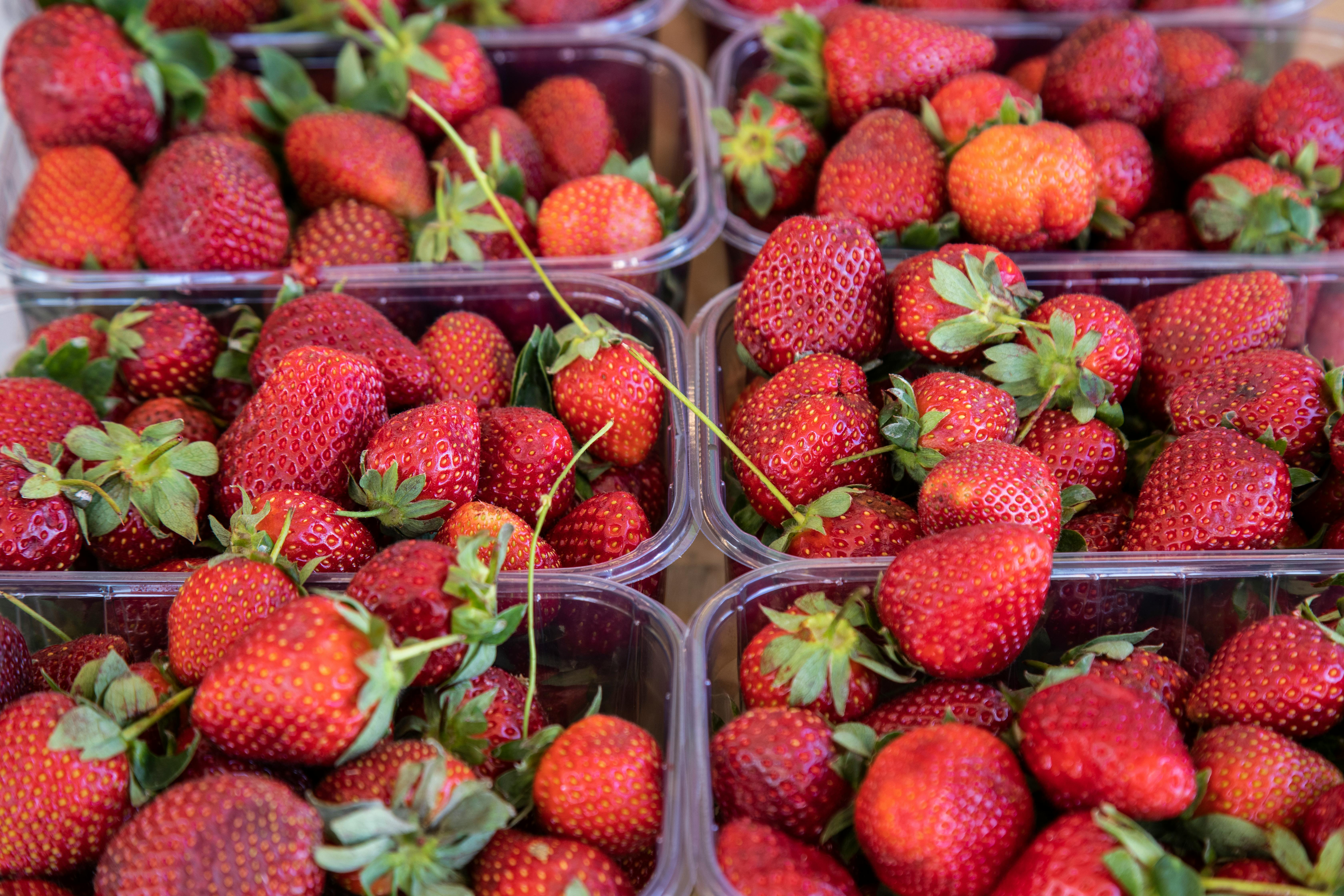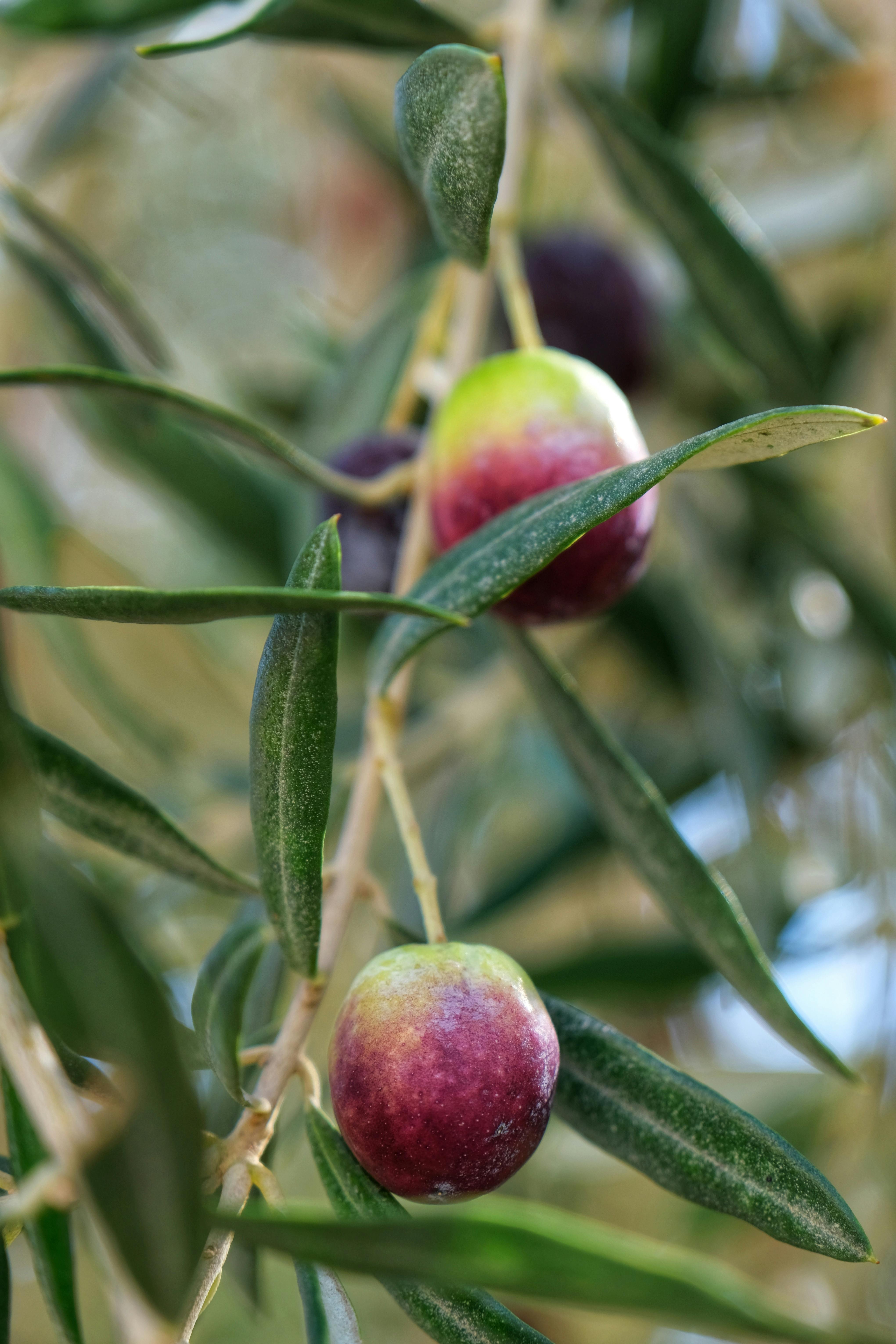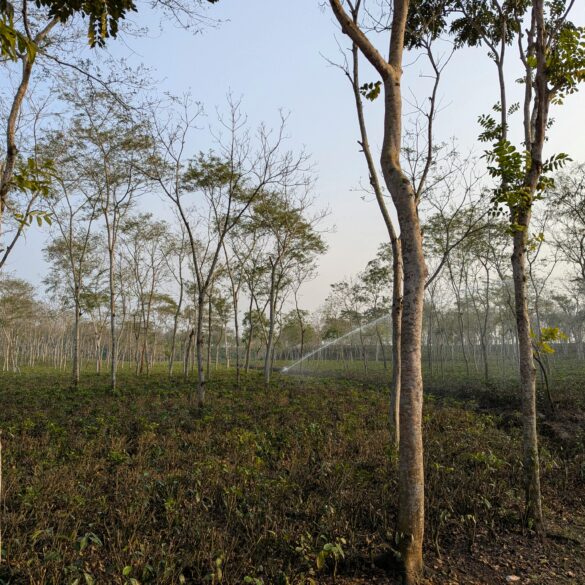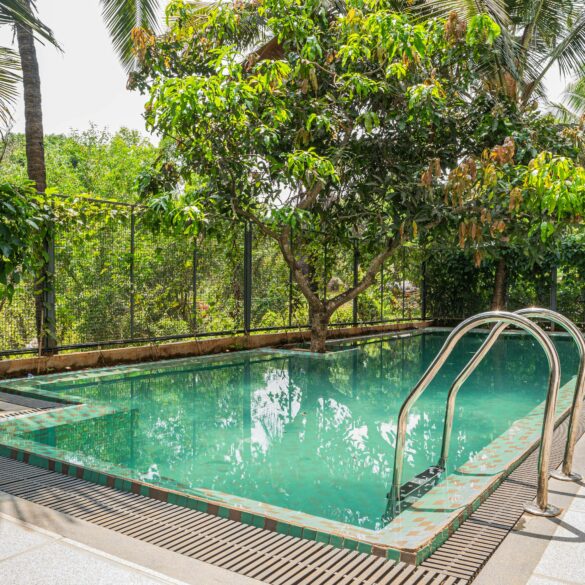Turkey’s Sustainable Agriculture: Proven Solutions for Food Security
How do some nations balance agricultural growth, food security, and environmental stewardship—especially with pressure mounting in the post-pandemic era? Turkey, in my experience, isn’t just another case study; it’s a mosaic of innovation, old wisdom, diversified crops, and sometimes controversial pivots that genuinely fascinate me. What really strikes me is how Turkish policymakers and local growers have transformed setbacks (think: droughts, unstable regional trade, climate whiplash) into game-changing food system resilience.1
Three years ago, I walked through a central Anatolian village after a spring rainfall, chatting with local conservation officers and olive farmers. Their stories—ranging from government-subsidized drip irrigation to centuries-old seed exchanges—reminded me that true sustainability isn’t just technical. It’s social, economic, sometimes fiercely communal. And now, with global headlines swirling about food shortages and carbon footprints, Turkey’s approach to sustainable agriculture isn’t just relevant—it’s urgent.2
Introduction: Why Turkey’s Agricultural Sustainability Matters
Let’s get honest for a moment. Food security scares typically spike following global events—COVID-19, supply chain hiccups, war in neighboring regions. And Turkey, bridging continents and climates, faces amplified agricultural volatility but also unique opportunities.3 Interestingly enough, the country isn’t only feeding its own 85+ million citizens; it exports to Europe, Africa, and the Middle East. Last year, Turkish agrifood exports hit nearly $24 billion, rivaling top EU producers.4
But what separates Turkey is how these exports and internal supply chains are sustained. Drip irrigation in arid regions. Localized seed collectives. Rotational grazing programs to rehabilitate overworked soils. These techniques are more than pilot projects—they’re embedded in rural and urban planning.5
Historical Context and Regional Dynamics
Back when I first started working with agricultural NGOs in southeastern Turkey, one theme echoed everywhere: adaptation. Ottoman-era terraces in the east, modern greenhouse complexes in Antalya, community wheat banks in the Black Sea hills. Each region reveals dynamic responses to historical droughts, wars, and market shifts.6
What I’ve learned: Turkish resilience isn’t just about new technologies—it arises from old, sometimes forgotten practices. For instance, the practice of yavaş şehir (“slow city”) development, blending agricultural preservation with careful urban expansion. I’ll be completely honest—back then, I doubted the staying power of these local movements. But, seeing their long-term endurance, I’m now convinced they underpin the real food security story in Turkey.7
Key Insight: Diverse Regional Solutions Make the Difference
Turkey’s food security isn’t planned centrally. Each climate zone—Aegean, Central Anatolia, Marmara—contributes unique crops, cultivation styles, and adaptive mechanisms that collectively insulate national output from climate extremes.
Key Principles of Turkey’s Sustainable Agriculture
- Water-Smart Irrigation: Widespread use of drip systems, subsidized by government, especially in Konya and Urfa.
- Seed Banking and Genetic Diversity: Local and national programs prioritize heritage varieties to strengthen crop resilience.
- Integrated Pest Management: Extension services train farmers in biological controls to reduce chemical usage.
- Farmer Cooperatives: Thousands of regional groups facilitate shared resources and market access.
- Agroforestry and Land Rehabilitation: Especially prevalent in erosion-prone regions.
Some of these principles, I used to think, were too localized to scale. But statistics indicate national adoption is accelerating: Drip irrigation covers over 3.6 million hectares today, up from just 800,000 in 2007.8 Water use efficiency, once a bureaucratic talking point, now saves the equivalent of several major dams each year.
If you’re looking for a template for real-world agricultural development, Turkey’s approach is not without flaws—but its principles are robust, adaptable, and deeply social.
Innovative Food Security Strategies: Policy, Technology & Culture
There’s a narrative out there (especially in popular media) that “food security” is mostly a matter of new technology—genome editing, satellite mapping, farm robots. Turkey does invest in these, but, let me clarify: its most effective solutions hinge equally on smart policies and deep-rooted cultural practices.9 Having reviewed regional subsidy plans last autumn, I noticed how government programs now actively reward traditional soil conservation alongside adopting new tech.10
Policy Foundations for Resilience
– Subsidies for drought-tolerant crops and water-efficient systems – Formal seed banking regulation: Turkish Seed Gene Bank began with 4,000 varieties, now catalogs over 110,000 – Farmer education: 27 new agricultural extension institutes since 2010, focusing on pest management and soil health
Recently, I chatted with a cooperative leader in Izmir about the impact of digital farm management apps (think: weather prediction, micro-market forecasting). He admitted, “Tech is essential, sure. But you still need someone who knows when the pomegranates want rain.” That honest humility is part of the Turkish agricultural story.
Culture as a Sustainability Catalyst
- Village-wide soil care rituals every spring
- Heritage crop festivals that share seeds and knowledge
- Intergenerational training: Grandparents as pest management mentors
Ever notice how culture-based adaptation sticks far longer than any short policy? That’s real staying power.11
Quick Data Table: Turkish Agricultural Sustainability by the Numbers
| Category | 2022 Figure | Growth Since 2012 | Global Ranking |
|---|---|---|---|
| Drip Irrigation Adoption | 3.6 million ha | +57% | Top 10 globally |
| Seed Bank Varieties | 110,000+ | +40% | Top 8 globally |
| Agricultural Cooperatives | 12,500+ | +30% | Top 5 in Europe |
| Organic Farming Land | 574,000 ha | +200% | Top 25 globally |
Pause here and think about those numbers. Turkey isn’t the biggest player everywhere, but its growth rate outpaces most regional peers. I used to advocate for simple, top-down policies. Now, I lean toward integrated models that blend local leadership, expert science, and flexible legislation.
Challenges, Opportunities, and Future Directions
Let me step back for a moment. Not everything is rosy—water stress is rising (central Anatolia lost 50% of its natural lakes last decade13), rural youth migration thins skilled labor, and market fluctuations after global events hit smallholders particularly hard. Some of you are probably skeptical: Can “sustainability” really overcome entrenched climate and economic shocks? I go back and forth on this. The reality is, what Turkey gets right is a multi-tier response:
- Layered risk management: local crop insurance plus national disaster pooling
- Smart investment in water infrastructure—factoring climate variability into every major project
- Digital training for smallholders to bridge generational and language gaps in tech adoption
One more thing: Don’t forget about EU policy alignment. With Turkey vying for closer trade ties and regulatory compatibility, sustainability standards (agricultural emissions, biodiversity metrics) will keep evolving.14 In my own consulting, EU-linked traceability demands have shaped Turkish food sector upgrades far beyond mere compliance—sometimes spurring genuine local innovation that surprises everyone, myself included.

Country Fact Box: Surprising Stats about Turkey
Okay, let’s step back. Why do these workforce and production numbers matter for long-term food security? It’s not just about quantity—it’s about flexibility. Turkey’s sector-wide adaptation allows pivots to new crops, tech, and marketing approaches in disruptive years (remember the COVID-19 supply chain rifts?).17 Conference conversations reveal that Turkish farmers, especially those connected to cooperatives, adjust crop selection based on real-time international market signals—even if that means major shifts mid-season.
Practical Takeaways and Global Relevance
This brings up a crucial point—Turkey’s journey isn’t just about national resilience. What excites me, since I’ve watched other countries borrow Turkish models, is the outsized impact for developing nations, Mediterranean partners, and even EU states contending with climate volatility. Sound familiar? Here are the strategies I see as most adaptable globally:
- Local Seed Preservation: Vital in regions facing genetic crop erosion—Turkey’s gene banking is a global leader
- Water Management: Subsidized drip irrigation and tiered supply planning can be scaled everywhere drought is an annual threat
- Agroforestry Integration: Rehabilitating farmland with tree crops prevents erosion and boosts biodiversity
- Smart Cooperatives: Turkey’s shared logistics model enables smallholders to compete with major companies—a lesson for rural economies everywhere
Now, I’m not suggesting every country can copy-paste the Turkish blueprint. Actually, let me clarify — effectiveness hinges on integrating local wisdom, social structures, and adaptive regulation. Plus, there’s this: Turkish resilience comes from a willingness to experiment, document, revise, and sometimes fail spectacularly (I’m thinking of some failed wheat diversification projects from 2015). It’s messy, real, and very, very human.
Meanwhile, global agencies now spotlight Turkey’s farm-to-table traceability, organic certifications, and climate-adaptive subsidy structure. United Nations FAO projects cite these as “replicable best practices for emerging markets.”18 As someone who’s seen these best practices debated (and occasionally challenged) at policy workshops, I’m partial to their transparency, clever incentive design, and continuous feedback loops.
Global Questions to Consider
- How can nations with less-developed agricultural sectors leverage local talent for innovation?
- Should governments prioritize genetic crop diversity in all major food plans?
- How much public investment in water infrastructure is “enough”?
- What is the balance between technological advancement and cultural preservation?
- What role should farmer cooperatives play in new food security policies?
From my perspective, Turkey’s example shows there’s no single “right” answer—only proven processes, persistent adaptation, and accountable evolution.
Conclusion: Building Long-Term Food Security—Lessons from Turkey
Wrapping this up, I want to revisit my own journey. Years ago, I saw Turkish rural development as chaotic—hundreds of local initiatives, conflicting regulatory updates, and the wildest weather swings you can imagine. But over time, my thinking evolved. What I should have mentioned first: Turkey’s “chaos” is also its strength. True food security there is a product of big vision, little details, and the humility to learn from both success and missteps.19
Now, looking ahead, I see Turkey not as a solved puzzle but a living laboratory. Next-gen sustainability challenges loom—digital traceability standards, EU green deal requirements, unpredictable climate events. Still, recent webinars highlight how the Turkish response is faster and more imaginative than many international observers realise.20 In fact, last winter’s cross-sectoral drought task forces looked like textbook examples of multistakeholder coordination. I’m genuinely impressed.
If you’re in policy, farming, or sustainability consulting, there’s a lot to borrow and adapt. But more importantly, Turkey’s journey underscores three universal lessons:
- Embrace diversity: Every region, crop, and technique strengthens national resilience.
- Cultivate humility: Top-down solutions must integrate with bottom-up wisdom.
- Invest in ongoing adaptation: Flexibility, not just planning, is the future of food security.
Before I go further, let me add—Turkey’s successes don’t mean perfection. Water stress and market risk remain real. Yet, increasingly, Turkish policy circles and farmer networks share data in open forums, debate practical reforms, and revise resource allocation every season. Looking ahead, this continuous co-evolution makes me hopeful.
Actionable Takeaway: Your Global Food Security Playbook
- Focus on local adaptation—don’t chase “one size fits all” strategies
- Make space for culture and community—policies are only as strong as their people
- Set transparent benchmarks and revise regularly
- Partner across sectors—government, NGOs, and farmers working together outperform siloed actors
From policy planning to grassroots farming, Turkey’s evolving model is proof: Sustainable agriculture can be more than a buzzword—it’s an ongoing, deeply communal, economic, and ecological reality.



